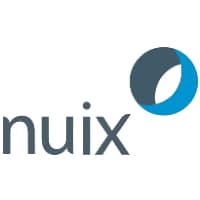 By Alex Chatzistamatis, Principal Solutions Consultant at Nuix
By Alex Chatzistamatis, Principal Solutions Consultant at Nuix
“Is there a way to create a reusable data repository for my most frequently litigated custodians and their privileged data?”
“What kind of sensitive data is there on my endpoints?”
“Can I combine multiple data types together using a single view?”
“How can I quickly respond to litigation, investigations, or governance, risk, and compliance requests?”
These are just a few of the questions I am asked all the time. My response is almost always the same!
An end-to-end necessity
It should be no secret that data volumes and data types continue to explode at unprecedented rates. In order to address these volumes and the evolving business needs a modern organization faces, an ‘end-to-end’ solution is almost a necessity.
You may hear the term ‘end-to-end’ thrown around a lot these days, but the reality is that many purported ‘end-to-end’ solutions are designed to solve one or two unique data problems, at best. In a perfect world, an ‘end-to-end’ solution can truly span to solve multiple data problems.

What will the ‘new norm’ be?
Of course, at this point in time we’re all dealing with the global impact wrought by COVID-19. While we continue to battle this pandemic, I’ve been thinking about what things will look like on the other side. What will be our new norm? What will the litigation backlog look like? Better yet, what about the explosion of new lawsuits? How will organizations lean on tools to fully embrace the work from home (WFH) model?
Will we see a paradigm shift in data and security postures? I do think that ultimately organizations will evaluate their existing practices and consider faster, smarter, and more efficient ways to react and adapt to the changing world of unstructured data.
Building a true ‘end-to-end’ solution
In this six-part blog series, I will chronicle what a holistic, end-to-end unstructured data solution looks like and how this aggregation of unique, sophisticated and flexible Nuix technologies can benefit your organization. While I will mostly be looking at this from an eDiscovery and forensic investigations lens, this could apply to various use-cases that include similar data sources and workflow methodologies like the Electronic Discovery Reference Model (EDRM).
Be sure to join me next time for part two, where I’ll dive into laying the foundation for an end-to-end solution with endpoint and cloud collection capabilities.










